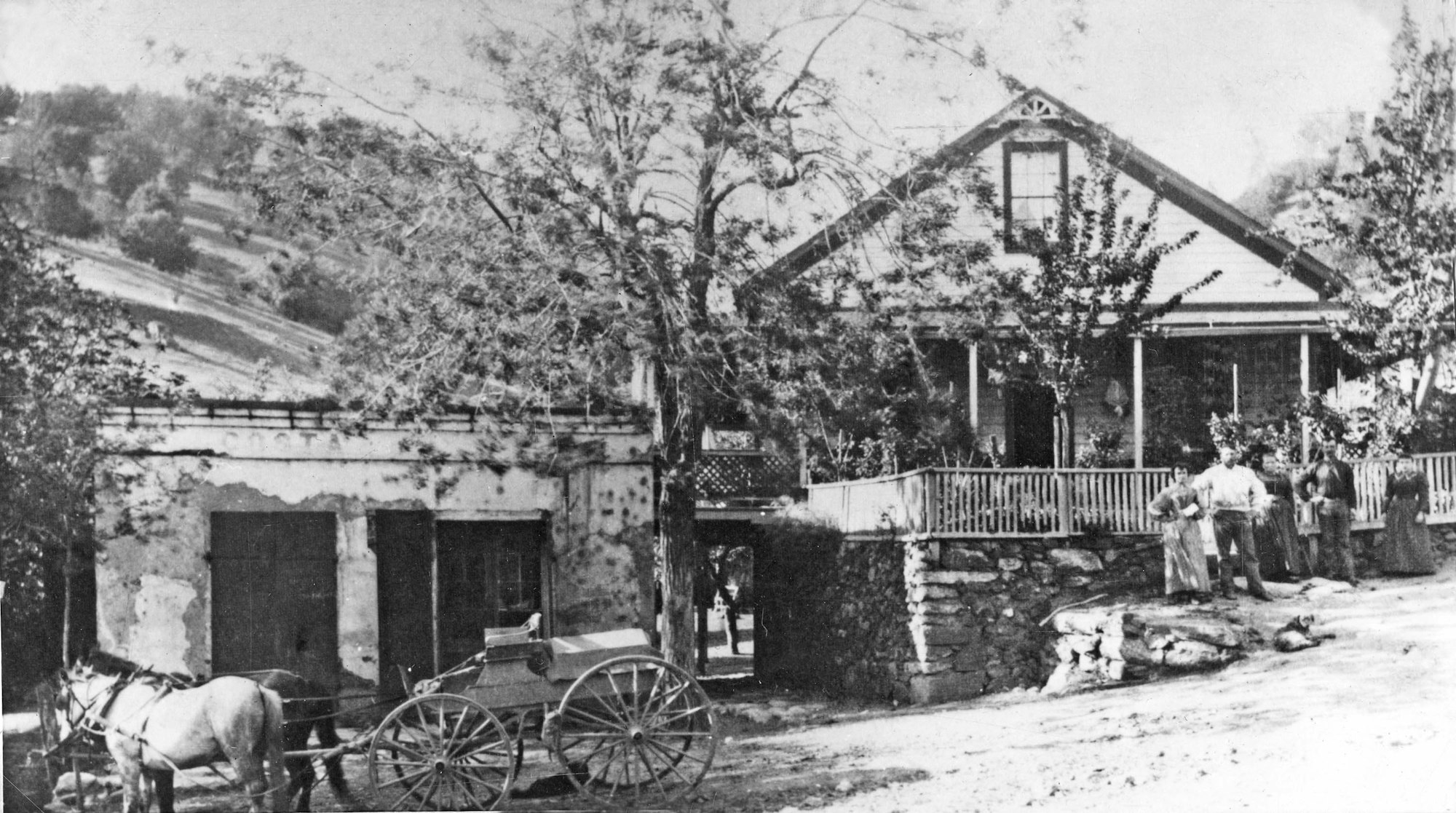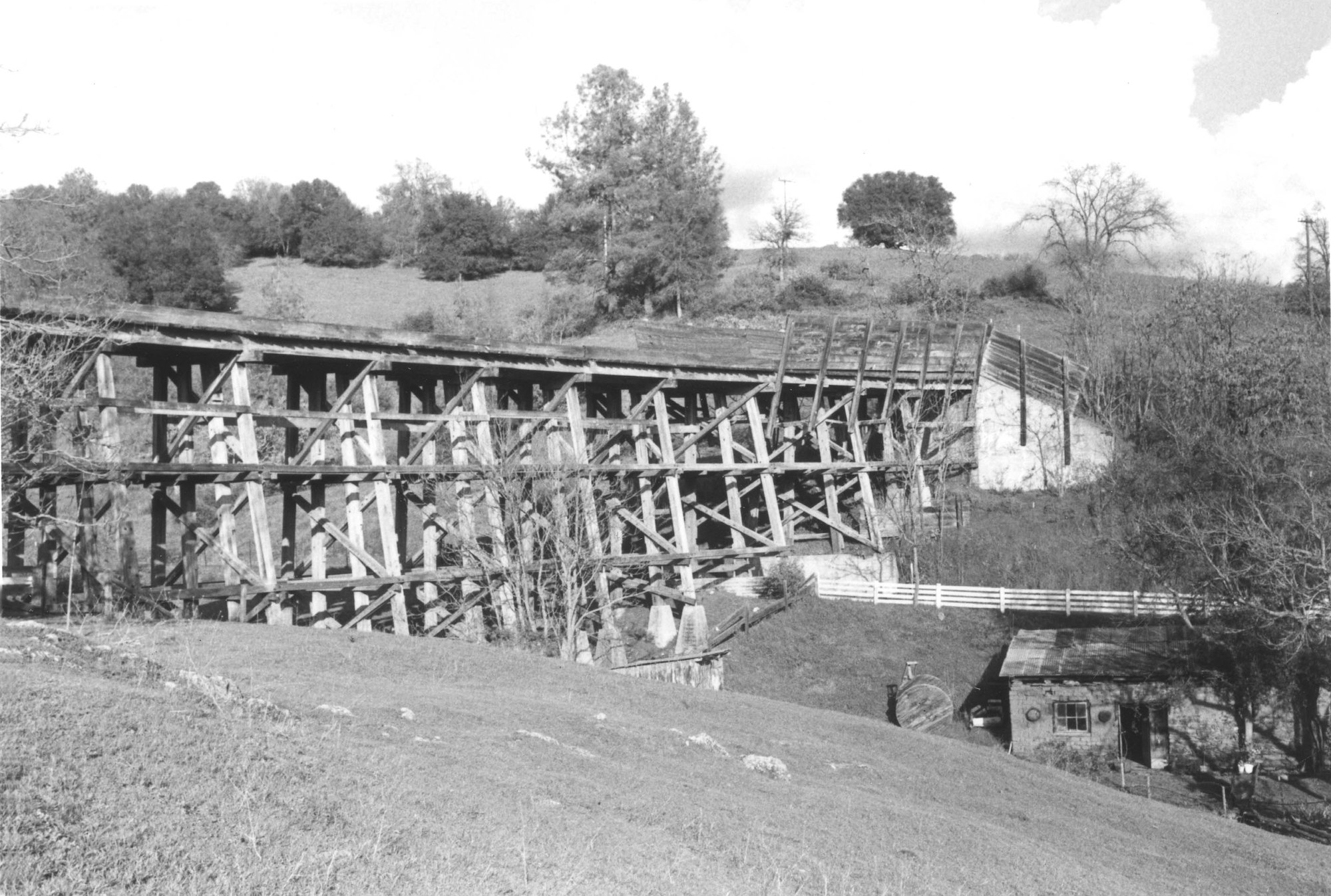Calaveritas

The community of Calaveritas is located on Calaveritas Creek, also known as O’Neil Creek, in north central Calaveras County, about five miles east of the County Seat in San Andreas. Gold was discovered in Calaveritas by William Wortman in 1850, and the world rushed in. By the mid-1850s a town had developed along the banks of Calaveritas Creek, with livery stables, stores, hotels, fandango halls, restaurants, saloons, and numerous miners’ cabins. The community was populated with people from all corners of the earth: Mexico, Chile, France, England, Germany, Ireland, China, and the Eastern States, most of whom were miners or those catering to miners.
A major fire in August 1857 destroyed 51 buildings in town, saving only an adobe store and the adobe walls of other buildings. The town was quickly rebuilt with many of the same enterprises, albeit with a diminished number of buildings and never again reached its peak population of about 700. Commercial establishments lined both sides of Main Street, with dwellings and ranches built primarily along the Back Street (also known as High Street) on the north side of Main Street, and along both sides of present Costa Road (4th Crossing Road).
By the mid-1870s, however, most of the free gold had been found, and folk drifted away to more prosperous areas. By the early 1880s, there were a few miners, including Henry Angel, ekeing out a living. It was at this time, however, that the community became more established, with families, primarily from Chiavari, Genoa, in Italy, settled on their landholdings. When the Townsite Map was drafted in 1885, there were four Italian landowners, one French, one Mexican, one American, and one Portuguese, a pattern that lasted until recent years with their descendants occupying their ancestral properties.
Most of the families were engaged in agricultural pursuits, growing grapes and making wine and brandy, planting vegetables and orchards, but mining seasonally as water permitted. In the early 1900s, the Calaveritas Hydraulic Mine was developed, employing local men, and during the 1930s Calaveritas Creek was dredged, maintaining the mining tradition. The one constant was the adobe Costa Store, now owned by their descendants the Cuneos, which has been in the same family since 1861.

In 1937, the character of the town was described by rancher John Huberty as:
Calaveritas is nestled among some of the many hills of Calaveras and stretching along the banks of the O’Neil or Calaveritas Creek. The houses, now so few in number, arrange themselves along the banks as though they had come down to the creek to drink and either lost their way or felt that the hills were too steep to climb out again, and there they lie, sole heirs of the heritage of the past.
That character is unchanged today, with a few adobe walls collapsed, and four new homes erected, but the extant houses and barns still line the roads and hillsides as they did when gold was king and agriculture was reaching its ascendency. The stone walls, fences, and foundations still demark buildings, roads, terraced gardens, and agricultural fields, reflecting a time and place when Italian stonemasons plied their trade the selfsame way as they did in their native Genoa.
By Judith Marvin
